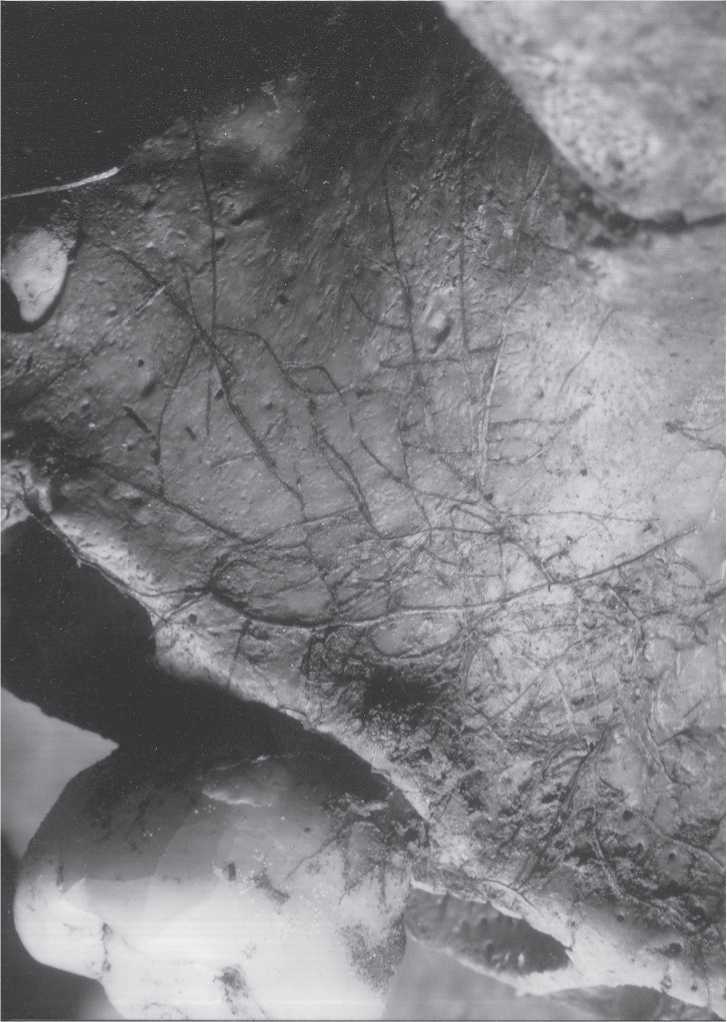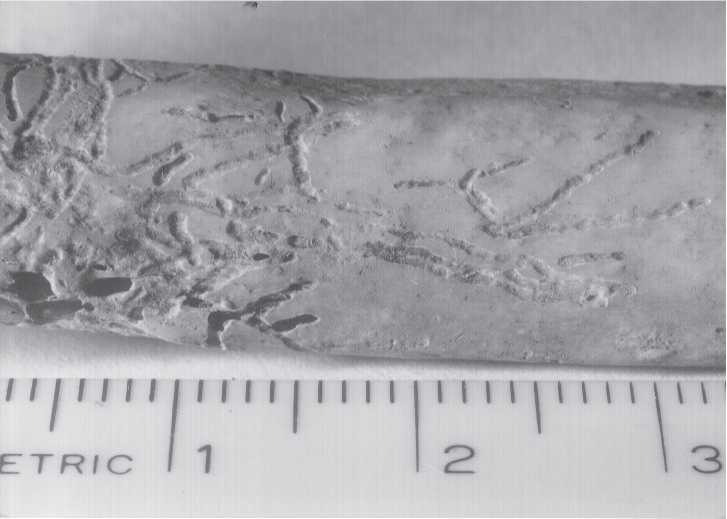In addition to taphonomic variable definitions, this chapter discusses the nature of perimortem taphonomy and its use in paleoanthropological and related research. The definer of the term taphonomy, I. A. YefTemov, is discussed. Examples of early studies of perimortem taphonomy are provided. The context of where archaeological bones are found uses the common distinction of cave versus open sites. There is variation in both the types of cave sites and environmental conditions of the open sites. As elsewhere in the world, hard-tissue preservation is better in cave sites than in open sites. The taphonomic

Fig. 2.13 Minimal plant root damage. Roots cover the bone surface and had been lying in faintly etched tracks at the time of excavation. Human female maxilla fTom Schobonova VIII (CGT color IAE 6-29-99:22).

Fig. 2.14 Moderate plant root damage. Here, root damage on the interior rib surface of a human skeleton from
Ozkerki I (1993) had the deeply etched characteristic dendritic pattern, but considerable bone surface remains undamaged. This degree of damage was acceptable but very close to eliminating the specimen for our study purposes (CGT color IAE 6-29-99:7).
Features that were studied herein are listed, defined, and illustrated. A few comments about live hyenas are provided. Perimortem taphonomy supplements other lines of evidence about past human activity and events, just as it does in contemporary human forensic taphonomy (Haglund and Sorg 1997, Boddington et al. 1987) and disaster archaeology (Gould 2007).
Next, in Chapter 3, we describe and briefly discuss our taphonomic observations for each of our 30 assemblages. A more detailed discussion is provided in Chapter 4.




 World History
World History









